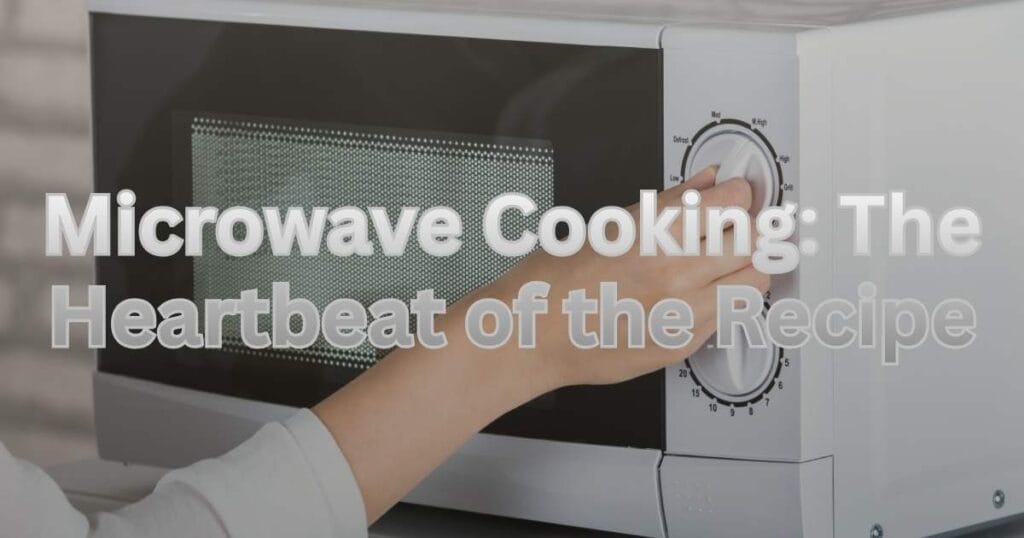There is something magical about it – golden flesh lit by the autumn sun, waiting to dissolve into sweetness. Sure, most of you believe that only an oven can invite a breath of life into this vegetable, but I will share a secret: your microwave can also compose that warm symphony – even faster, even easier, just as sensual.
Microwave butternut squash cooking is not just about saving your precious time – it is an art of a subtle transformation. In minutes, the hard-working vegetable becomes soft poetry of butter – and whether you need a meal pre-cooker for the next week, preparing dinner in an extreme hurry, or wishing to relax without any hassle, this Guide to Cooking Butternut Squash will narrate every note, scent, and secret stroke of flavor.

Why You Need to Try the Microwave Method
Life is busy – we juggle between work calls, gym sessions, and Saturday Netflix. Who has 1 hour to blanch it? Microwave steps in as your personal miracle wand of 2020.
Here’s why this perfect method deserves a place in your heart and your kitchen:
- Speed ‘n’ flavor. Oven: 45–60 minutes vs. 10–12 in the microwave.
- No preheat fuss. Straight from the knife to the plate – no waiting around for your oven to go “!”.
- Kind to those nutrients. Microwaving keeps more vitamins than boiling or baking. Vitamin A, potassium, and fiber are all chilling where they’re meant to be.
- Texture glide. Soft for some smashing, crunchy for some salads, and pure for some souping – your call!
So, the microwave is not just convenient – it’s the quiet Einstein of your kitchen.
What the Science Is Really Saying

Butternut squash is breaking down chemistry and needs. The natural sugars in the butternut squash are gently caramelized. There’s steam in its flesh that’s just about breaking down the tough fibers while sealing in the sweet prize.
You could see it as a waltz–heat molecules gliding with moisture; crisp sides are transferred to fluffy clouds. And, unlike roasting, where dryness takes away from its softness, microwaving yields something close to custard experience.
So, if you’re advised smoothing it over with leftovers, grin a little; you’ve found the hidden concert of heat and hydration.
Selecting the Perfect Butternut Squash
The journey starts long before you hit the “Start” button. Choosing the right squash is half the poetry.
Here’s how you know you’ve found “the one”:
| Feature | What to Look For | Why It Matters |
| Color | Deep beige or honey gold | Sign of full ripeness and natural sweetness |
| Texture | Smooth skin, no soft spots | Ensures even cooking and freshness |
| Shape | Even bulb and neck | Easier to cut and cook uniformly |
| Weight | Feels heavy for its size | Indicates dense, moist flesh |
Avoid shiny skins (they’re usually immature) and go for that matte, earthy finish — like golden velvet.
Prepping Like a Pro
And here’s where the ritual commences: the sound of the knife, the smell of raw squash, the rhythm of simplicity.
Here’s how to prepare:
- Wash the surface. Even if you’re going to strip it, rinse away any field dust or wax.
- Slice off both ends. This will make peeling easier.
- Peel the skin. Use a sturdy peeler; if the skin is too hard to pull, microwave the whole squash for 2 minutes to soften it a bit.
- Halve it lengthwise. Remove the seeds with a spoon – the squash’s soft belly will crumble beneath your hands.
- Cube or halve as dictated by the recipe. Smaller cubes get prepared quicker, and halved keep their shape better.
This prep is such a calm and lovely procedure – it is almost as if every outer layer is taking away to uncover something unknown.
Microwave Cooking: The Heartbeat of the Recipe

And now the magic. Your master method—tested, tasted, and perfected:
If You’re Cooking Cubes
- Pit cubes into a heatproof bowl.
- Add a tablespoon of water to generate gentle steam.
- Cover with a microwave lid or a plastic wrap with a small vent.
- Heat on High for 8–10 minutes, stirring halfway through for equal softness.
- Check with a fork: it should glide through, the meat melting like butter.
If You’re Cooking Halves
- Pit cut sides down into a glass dish with two tablespoons of water.
- Cover loosely to trap the steam.
- Make it on High for 10–14 minutes.
- Afterward, let it sit for 5 minutes; the heat mellows the texture beautifully.
Microwave wattages vary: tweak timing gently. The aim: creamy, fork-tender ease, and mellowed, golden texture.
Flavor Infusion: Raise Above the Basics Unlike Every Other Page and Blog
This is where all others leave the page. While every other stops at cook and serve, let’s simmer up the gastronomy:
- Melt 1 tbsp butter and 1 tsp maple syrup, and drizzle it over the hot squash. It’s like “pumpkin pie for dinner.”
- Toss 125 ml olive oil, thyme, garlic powder, and a pinch of black pepper in the cubes. Haze of aroma will hug your kitchen.
- Want “fall morning”? Just dust a bit of cinnamon with a pinch of sea salt. Sweet, wooden, and lordly, every single one of those has its personality.
база Ur-squash, and they’re all made in the microwave.
Serving from the Heart Ideas: When Your Squash is Soft and Glowing
It’s time to let it shine!
- Into creamy purée, smash it — perfect grilled salmon or roasted chickpeas beneath.
- Cold salad in a with arugula, cranberries, and feta toss.
- With Meat Clement squash is turned into velvety soup using coconut milk and ginger.
- To Sage and Browned Butter’ for the pasta, add.
Just food but comfort on a plate—a peaceful whisper to heat and home.
Common Mistakes That Everyone Makes

No one is perfect. And the same goes for professional chefs. Avoid the pitfall of:
- The cover is missing: Cook without the cap, and the steam leaves the device dry.
- Overcrowd the dish: It’s overcrowded with too many cubes when it is done.
- Do not rest after microwaving: Let it stand for a while; those remaining minutes are critical.
- Metal bowls are used: Do not forget that microwaves and metal are incompatible.
Microwave vs Oven: The Showdown
| Feature | Microwave | Oven |
| Time | 10–12 mins | 45–60 mins |
| Texture | Moist, tender | Crispy edges |
| Energy Use | Low | High |
| Flavor Profile | Subtle & sweet | Deeply roasted |
| Ease | Super quick | Requires monitoring |
If you crave roasted depth, you can microwave first and then broil for 5 minutes — best of both worlds.
👉 Here is the best Microwave List
Storage & Reheating Secrets
Save those golden bites for later love:
- Fridge: in an airtight container for up to 5 days.
- Freezer: Puree it and freeze in cubes — simple addition for soups.
- Reheat: Microwave for 1–2 minutes with a splash of water to renew the moisture.
Almost like a time machine, but with flavor — it tastes as good as new every time.
👉 Is Frigidaire a Good Refrigerator Brand? Honest Review Before You Buy!
I Am Beyond the Recipe: A Note of Mindfulness
Cake comes to mind, but it’s not I came to cook. Butternut squash cooking is not about food. Just the realization that everything can be savored.
The sight of the microwave window misting up, the sensation of the temperature rising, and the recognition that sometimes the simplest things provide the most vivid enjoyment.
That golden fruit provides a lesson in time, transformation, and thankfulness with a delicate snap.
In Conclusion
Cooking butternut squash in the microwave, we once again prove that good things do not need hours. This is convenience laid in elegance – the dish is prepared quickly but remains tender.
A short and easy creation that talks to your senses, no matter if you are just a beginner or an experienced food-poet.
So next time you come across golden squash in the store, just smile. You have it all – the mystery, the magic of the minutes, the core of the homemade warmth.
FAQ
Can I Butternut Squash whole microwave do not cut it?
Yes! With a fork, you can make several holes before microwaving it for 10 minutes on high power. After about 15 or less, when it softens up a bit longer then you will also find there is less difficulty peeling and cutting with knife.
Does water need to be added for microwaving?
A tablespoon or so will distribute the heat more evenly by producing steam.
How do I get a roasted flavor out of microwaving?
Take it after microwave, and broil 5 minutes to make the surfaces caramelized.
Can I eat the skin?
In theory, sure you can, but it’s thick–it’s better to peel for a smoother bite.
What are the best spices with butternut squash?
A touch of cinnamon, nutmeg, paprika, and surprisingly, thyme.

